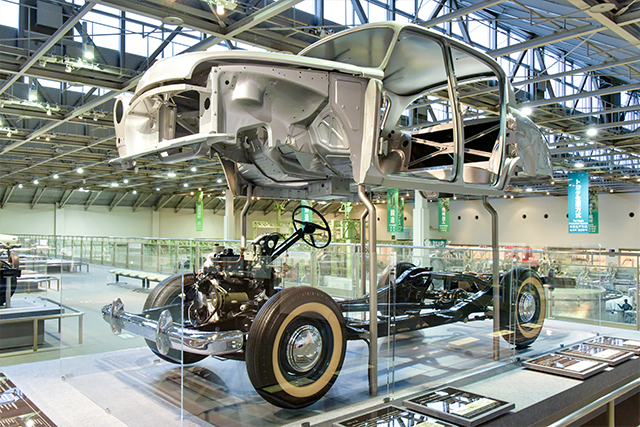Before its time, it would have been difficult to envisage the influence that Western Automobile technology would have on world car culture. Most of what we consider classic Western automobiles today came about from a push by industrialists who saw the potential of mass manufacturing and a new direction in transportation. The result was something of a revolution, as vehicles were produced in factories, using parts that could be interchangeable between different machines. In this way, designs were not fixed, and instead could be swapped or changed as the situation required.
This same principle was later used in aviation: where a similar approach was taken with respect to interchangeable parts, although on a much smaller scale. Initially, production lines managed to make vehicles that could be switched quickly between horse-drawn carriages and air-operated cars. As manufacturing became more compact, and the pace of life increased, improvements were made to the automobile itself, and eventually, to the vehicle that actually rolled off the assembly line – the Model T. It was obvious that this was an innovation that would only become more widespread in the coming years, and as the results of the Great Depression showed, such trends were not likely to slow down. Thus, it was inevitable that by the end of the nineteenth century, when Western Automobile manufacturing had come of age, there would be a real need for standardized parts, in order to ensure uniformity in the design.
One of the first things: that can be noticed in this process is the appearance of the body of the vehicle. At the beginning, most vehicles simply featured either a round or even a square design, and the cab-over was used quite often. However, as time went by, the incorporation of a more stylized look was made, which was reflected in both the design of the exterior, and the interior of the vehicle. In the early period, the standard headrests were used for this purpose, while later they became standard equipment for most cars.

Naturally, this involved the introduction of parts: which could be interchangeable between different machines. This led to the appearance of what we know today as the dashboard, or the instrument panel. This part served the dual purpose of allowing easy access to the driver from all sides of the automobile, whilst also serving to conceal all other instruments and controls. After a certain period of evolution, these instruments and controls became known as the glove box. This development marked the first steps towards the concept of a fully functional automobile, where driving was no longer a matter of survival, but a matter of convenience.
Even though the evolution of the dash board: and the instruments and controls became more clearly linked to the operation of the automobile, it was often the case that the design itself began to evolve in harmony with the rest of the design. The end result was a layout which was aesthetically pleasing, yet mechanically efficient. This integration became more natural as the automobile went through development, and the end result was a vehicle that was both comfortable and safe to drive. The end result of this unification was the production of vehicles which were more streamlined and had more features at the same time, and which was a progression towards the concept of the ‘supercar.’
As the supercar evolved: it began to lose some of the styling of its predecessors. In particular, the appearance of the Bentleys was somewhat marred by the fact that it was manufactured on the basis of a similar design, and parts used for the production of the cars ran the gamut from stainless steel to aluminum. Also, the production of the Bentleys resulted in some production difficulties with the Ford Motor Company, and a new division was established for the production of passenger cars, based upon the Lotus. Although these cars shared some parts with the Bentleys, the Lotus was a more elegant design, and ceased production after the introduction of the Ford car range.
